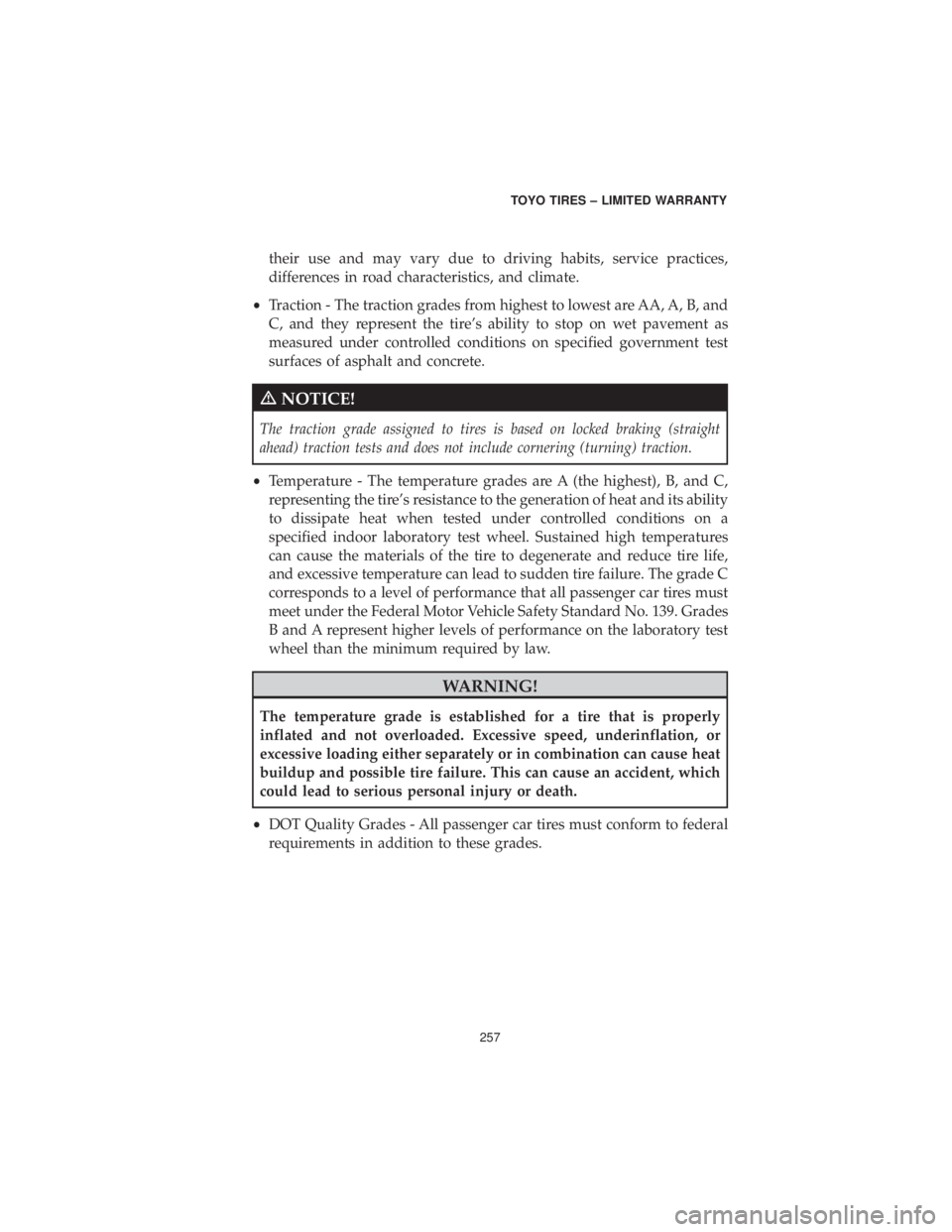their use and may vary due to driving habits, service practices,
differences in road characteristics, and climate.
• Traction - The traction grades from highest to lowest are AA, A, B, and
C, and they represent the tire’s ability to stop on wet pavement as
measured under controlled conditions on specified government test
surfaces of asphalt and concrete.
m NOTICE!
The traction grade assigned to tires is based on locked braking (straight
ahead) traction tests and does not include cornering (turning) traction.
• Temperature - The temperature grades are A (the highest), B, and C,
representing the tire’s resistance to the generation of heat and its ability
to dissipate heat when tested under controlled conditions on a
specified indoor laboratory test wheel. Sustained high temperatures
can cause the materials of the tire to degenerate and reduce tire life,
and excessive temperature can lead to sudden tire failure. The grade C
corresponds to a level of performance that all passenger car tires must
meet under the Federal Motor Vehicle Safety Standard No. 139. Grades
B and A represent higher levels of performance on the laboratory test
wheel than the minimum required by law.
WARNING!
The temperature grade is established for a tire that is properly
inflated and not overloaded. Excessive speed, underinflation, or
excessive loading either separately or in combination can cause heat
buildup and possible tire failure. This can cause an accident, which
could lead to serious personal injury or death.
• DOT Quality Grades - All passenger car tires must conform to federal
requirements in addition to these grades.
TOYO TIRES – LIMITED WARRANTY
257
